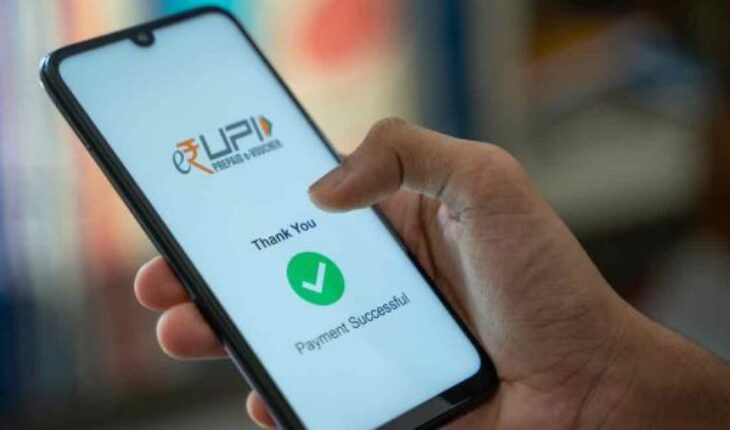
by Deepak Chand Thakur
Brief on Delegated Payments – In today’s busy world, keeping up with timely payments can be difficult, especially for those managing multiple tasks or navigating cash-heavy environments. UPI Circle offers a solution by allowing primary account holders to authorize others to make UPI payments on their behalf, even if the secondary users don’t have bank accounts. With UPI Circle, primary account holders maintain full control over transactions, secured by two-factor authentication.
How UPI Circle Works– Delegating payments is straightforward and flexible. Primary users can choose to delegate payments entirely or partially. In full delegation, the secondary user has direct payment authority up to a set limit. For partial delegation, the secondary user must send a payment request for each transaction, which the primary user must approve, ensuring additional control. The backend system manages account permissions, enforces transaction limits, and processes transactions securely.
Step-by-step process for primary account holder to link the secondary user:
- The primary account holder selects a delegate and grants full or partial payment access.
- The delegate chooses the payment type (e.g., mobile recharge or bill payment) and initiates the transaction through the app and the transaction is processed using the primary user’s bank account.
- Upon completion of the transaction, the delegate receives confirmation, and the transaction is recorded for both the users.
Value it delivers to the banks:
Low-Cost Customer Acquisition Tool
UPI Circle enables banks to bring unbanked customers into the digital mainstream without incurring any acquisition cost. Banks benefit from increasing transaction volumes and allowing for tailored solutions to enhance customer engagement in underserved markets.
Mitigates Risk with Transaction Limits
UPI Circle allows customers to set transaction limits to prevent overspending as well as the validity periods for account access at a per delegate and verifies and authorizes payments in line with delegated permissions and defined limits.
Comprehensive Reporting and Enhanced Control
UPI Circle provides extensive reporting capabilities at both aggregate and individual user levels, offering insights into transaction trends, velocity, and value. Banks can leverage these detailed reports to fine-tune their products and strategies, enhancing overall performance.
Meanwhile, customers benefit from greater control, as UPI Circle enables users to keep track of their transactions effectively, ensuring transparency and oversight.
Alerts and Notifications
The system supports real-time alerts and notifications to users for every transaction or breach of limits, allowing them to stay informed about transaction activities and maintain control over delegated transactions.
Improve Customer Satisfaction with Efficient Dispute Management
The system manages and resolves disputes related to delegated payments by integrating with Unified Dispute and Issue Resolution (UDIR reducing manual intervention, accelerating resolution times, and minimizing the likelihood of errors, thereby creating a more dependable and efficient dispute management system.
Efficiently Processes Payments
Seamlessly connects with the central payment scheme and efficiently directs transaction requests, including routing pay requests from secondary users to the primary user’s bank for approval in partial delegation scenarios
Optimizes Transaction Processing Costs
UPI Circle features an API-first architecture, offering standardized APIs that enable seamless integration with Core Banking Systems, ACS systems, central payment schemes, and Dispute Resolution systems, coupled with support for front-end UPI applications, allowing banks to implement and go live within weeks. By bundling UPI Circle with the NPCI UPI Lightweight Switch, banks swiftly deploy new payment features and services, significantly minimizing the need for extensive customization and ongoing updates to the core payment system and reducing time-to-market for innovative offerings.
Value to Customers
Transact Anytime, Anywhere
Secondary users can conveniently conduct a range of Person-to-Person (P2P), and Person-to-Merchant (P2M) transactions in-store and online.
Eliminates the Need for a Bank Account
By eliminating the need for a bank account, secondary users can transact seamlessly, allowing unbanked individuals to join the digital mainstream.
Enhanced Security
UPI Circle ensures secure account management by overseeing permissions and user rights. Primary account holders can effortlessly create, modify, and revoke authorizations for secondary users, with robust two-factor authentication (2FA) safeguarding the entire process.
Total Control
Maintain full oversight of accounts with Pay Circle. Primary account holders can monitor and manage all transactions performed by secondary users, ensuring complete control and security.
Streamlined Convenience
UPI Circle simplifies expense management by allowing easy delegation of payments across linked accounts, enhancing overall convenience.
Wide Range of Use Cases
UPI Circle supports a wide range of use cases
- Personal Expenses: Busy professionals can delegate personal expense payments to assistants or family members.
- Business Transactions: Small business holders can authorize colleagues or office managers to handle business-related expenses.
- Household Bills: Primary account holders can delegate the payment of household bills and utilities to a trusted family member.
Deepak Chand Thakur, Co-founder and CEO of NPST Ltd., Views are personal.





